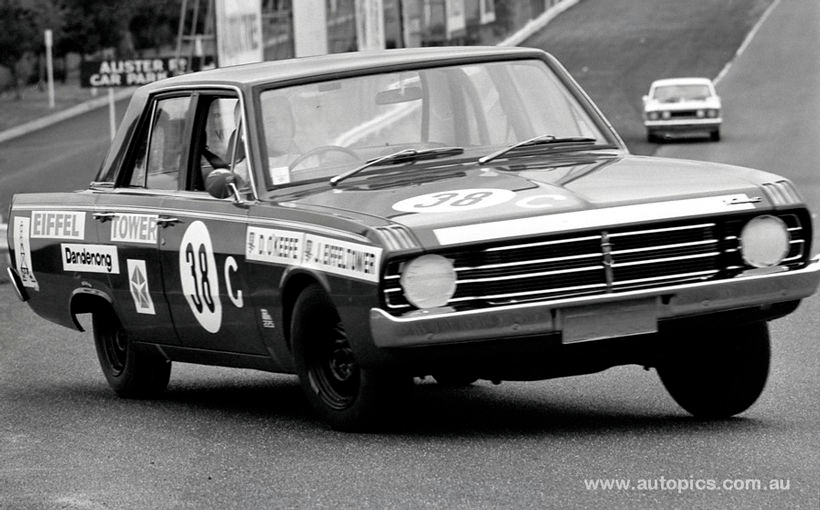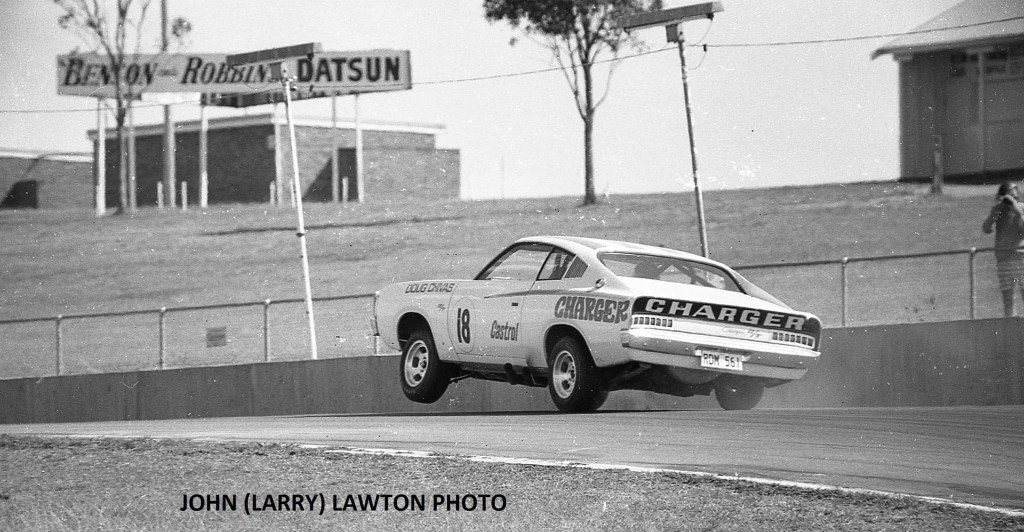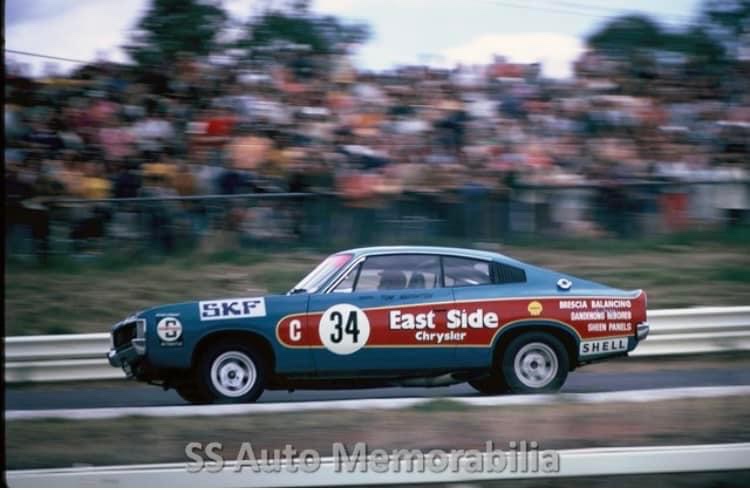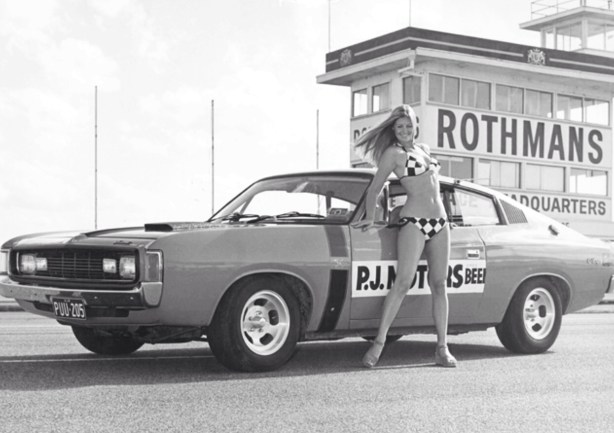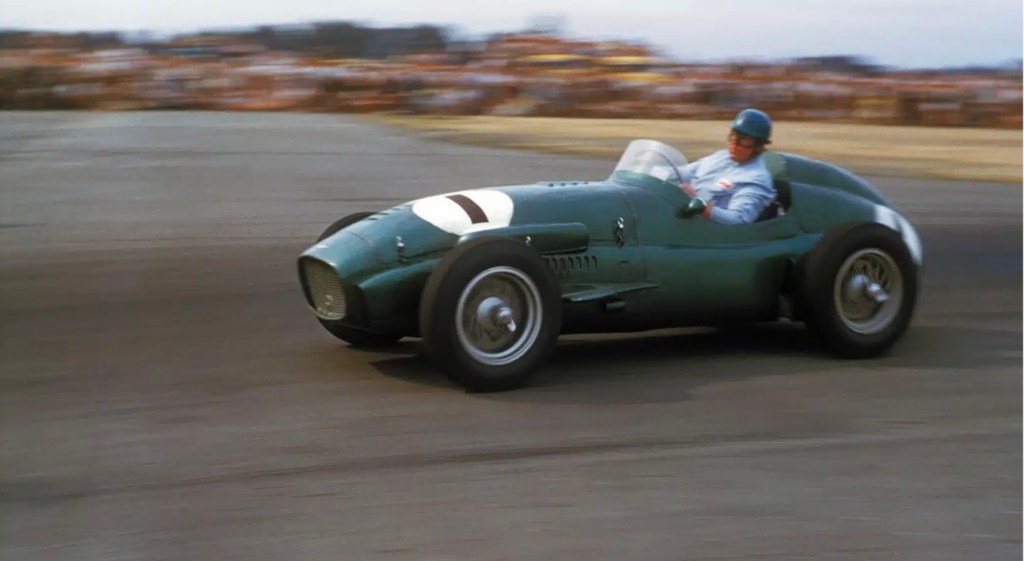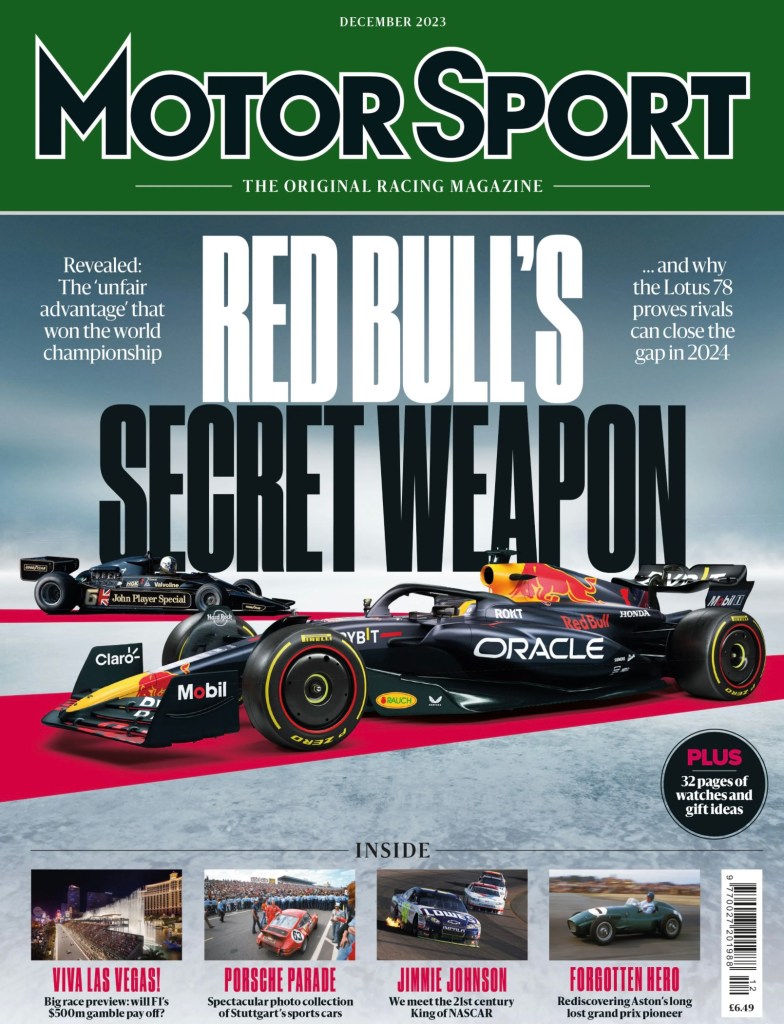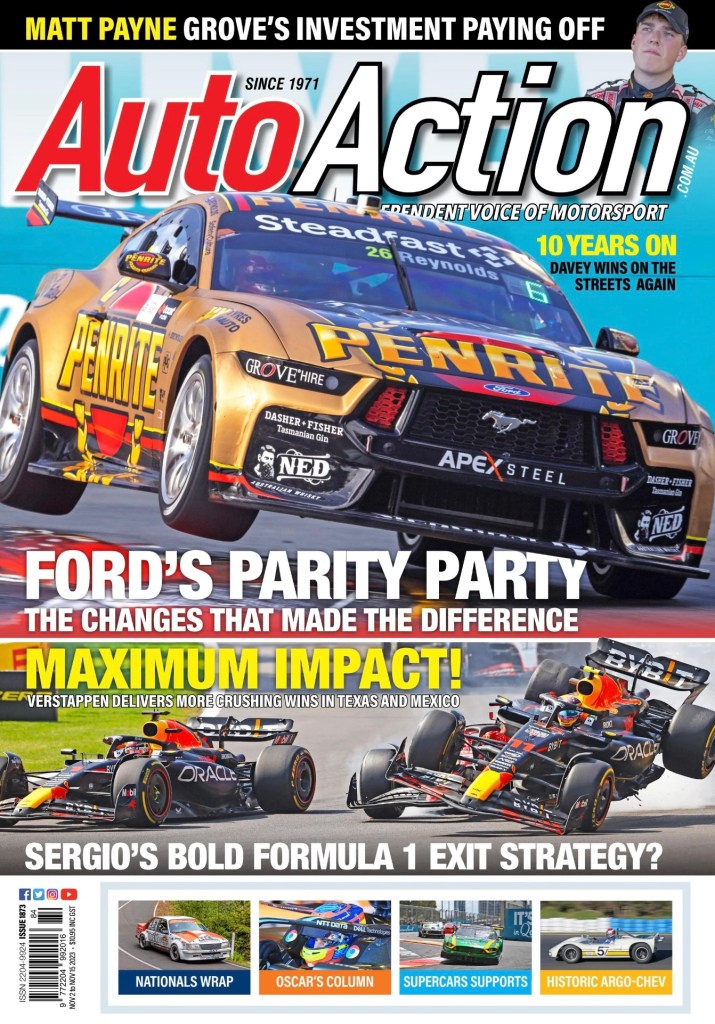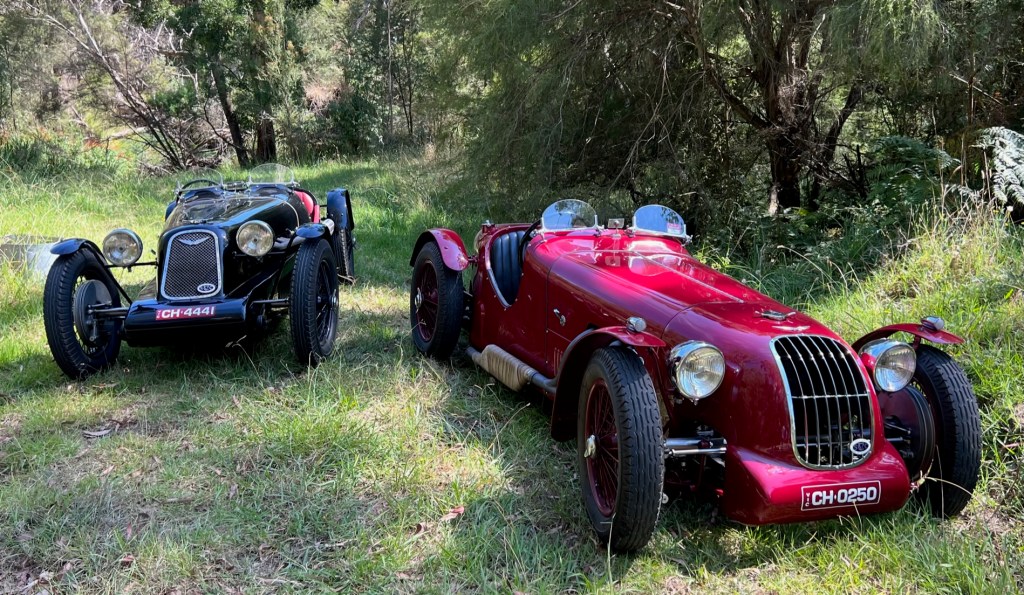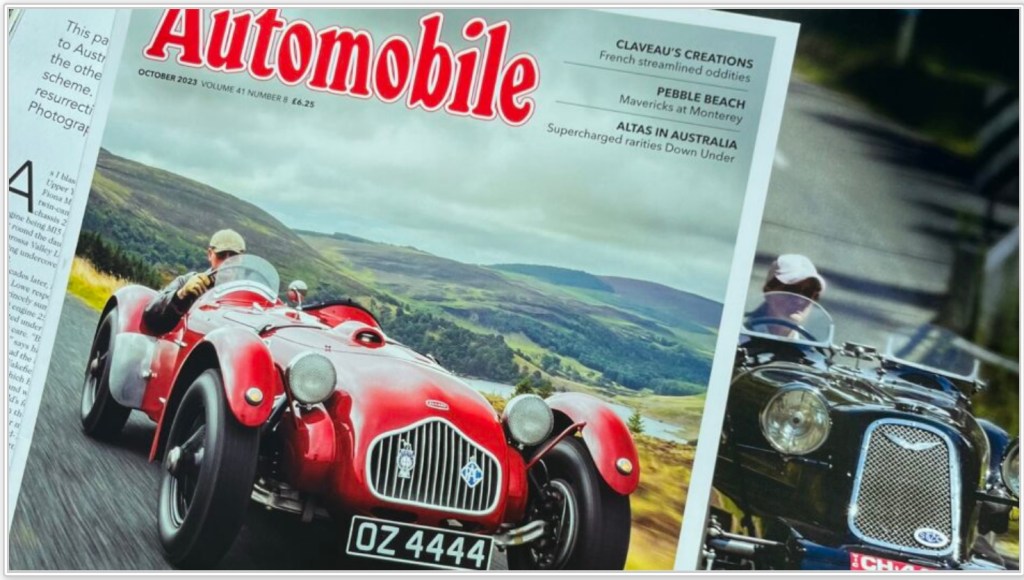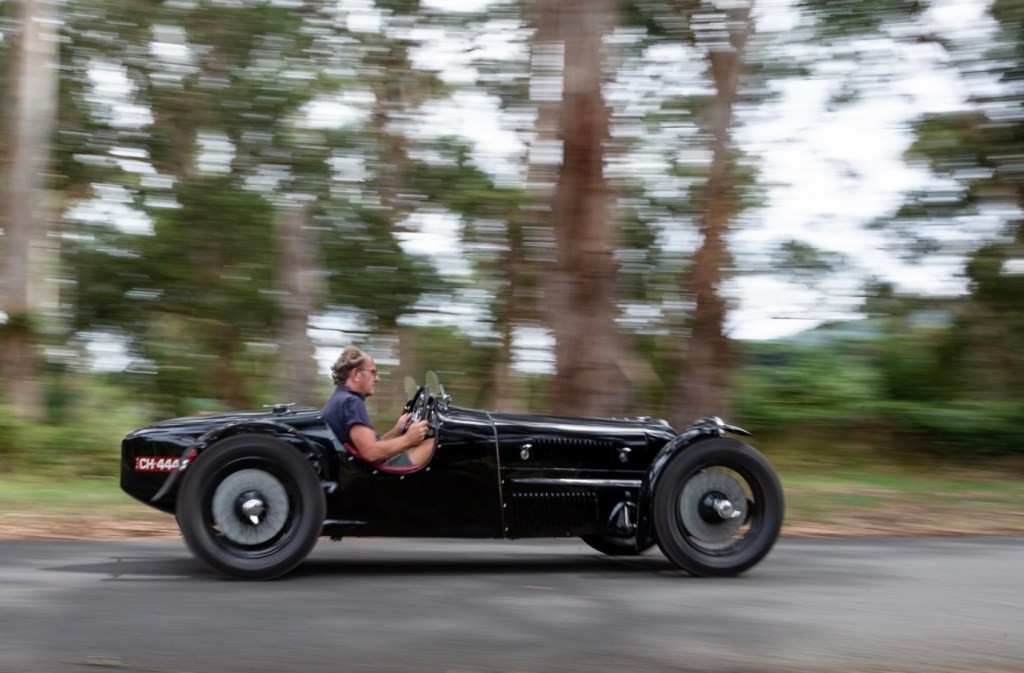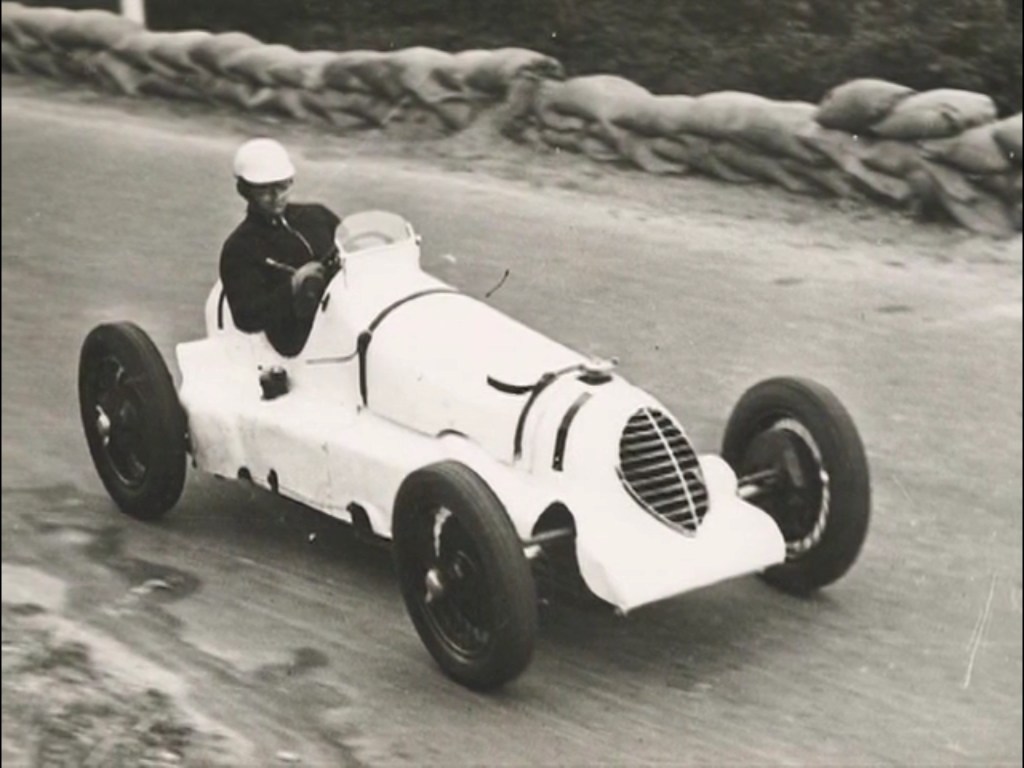
(oldracephotos/King)
Bob Jane, Elfin 400 Repco, during the Longford Tasman round in 1967. Sweet Repco V8 music @ 7000 rpm flat out in fifth gear…
Idle moments in front of the Teev provide a male multi-tasking opportunity, looking for ‘that shot’ which inspires an article. Breathing, lookin’ at the telly and searching for photographic inspiration simultaneously- three things at once, my girlfriend can scarcely believe it.
There are some cars which are more prolific in terms of the number of photos in circulation though, usually for the same reasons. That is, they are sensational to look at, were race winners and in Australia raced nationally over a number of years and therefore every ‘snapper in the country, both professional and amateur has had a crack at them. Then, kindly circulated said photos on that internet thingy for us all to enjoy!
So…
In the decade from 1960 to 1970’ish there are several cars which are prevalent as defined above- Pete Geoghegan’s second Mustang, Allan Moffat’s Mustang Trans Am, Leo Geoghegan’s Lotus 39 Repco, Frank Gardner/Kevin Bartlett’s Mildren ‘Yellow Submarine’, Frank Matich Matich SR3’s and Bob’s Elfin 400.

Delivery of the new 400 to the Bob Jane team, Elfins Conmurra Avenue, Edwardstown factory, Adelaide in late 1966. The factory was not flash but the sense of history and those who had been there before was palpable when I inspected my humble Crusader Elfin Vee mid-build in the early nineties. From a modest place did some amazing cars originate (B Mills)
I’ve already done the Elfin 400 to death really…
But there are just too many wonderful photos of Bob’s car not to do this article which I originally intended to be pictorial.
One long previous article was specifically about Frank Matich’s Elfin 400 Olds aka the Traco Olds, the first completed. That piece also covered at somewhat laborious length the design and development of the car, here ‘tis;
Elfin 400/Traco Olds: Frank Matich, Niel Allen and Garrie Cooper…
The other was another lengthy tome, mainly about Hume Weir circuit but it also included a piece within it on Bob’s car, the third 400 built, click here;
Hume Weir…

Bob Jane in one of his first runs, the first race meeting?, Warwick Farm Tasman round in 1967. Top gun that weekend Niel Allen in his Elfin 400 Chev (J Ellacott)
Elfin 400 Repco ‘BB67-3’ was raced by some mighty fine drivers whilst owned by Bob, here is the man himself during the Warwick Farm Tasman round in February 1967…
Jane raced it, so too did 1966/7 Australian Gold Star Champion Spencer Martin. Lets not forget Melbourne up and comer Ian Cook had some drives in 1968, he sadly lost his life at Sandown in 1973 in an ex-Bob Jane Racing machine too. And another young charger, Bevan Gibson took the wheel in 1969, and soon lost his life in it at Bathurst during the 1969 Easter Meeting.
What changed the direction of the article was re-discovery of my copy of ‘Gentleman John Harvey’, the biography on Harves which has some great first-hand material about Bevan by both Bob Jane and John Harvey. I couldn’t find the book when I wrote the Matich Elfin 400 piece, which would have been the right place for its contents, but given the limited print run of Tony McGirr’s book I thought getting these perspectives out there and more readily accessible worthwhile.
In researching Ian Cook i made contact with Grant Twining who owns the Devione Ford, a car raced by Ian. Grant was able to provide some much needed detail to flesh out his story- many thanks to him.
This 400 is significant in Repco Brabham Engines history too as it was fitted with the first customer, as against works engines provided to Jack Brabham. It was a 4.4 litre ‘RB620 Series’ V8.

Ken Hastings aboard the rebuilt ‘BB67-3’ at Sandown on the fast left drop to Dandenong Road circa 1970. Note the change to the bodywork at front and addition of a rear wing. Unguarded horse racing fencing an ever present danger back then. It’s practice by the look, the Pat Crea VW Beetle and ‘Chocolates’ David Robertson Ford Capri V8 sports sedans in the distance (L Hemer)
After the Gibson Bathurst tragedy the car was acquired by Melbourne racer Ken Hastings who rebuilt it. The car passed through several hands over the years before being bought by Elfin enthusiast/racer Bill Hemming, well known to Australians for the Elfin Heritage Centre which houses his collection of cars including ‘BB67-3′.
http://www.elfinheritage.com.au/
The car was rebuilt around a new chassis some years back albeit the very much shagged original frame remains ‘part of the package’- that is the CAMS ‘Certificate Of Description’ recognises the existence of the second chassis precluding the possibility of a ‘B Car’ being built. A neat solution I thought- history and safety are recognised.

Bob Jane leads Spencer Martin and the Elfin 400 Repco at Hume Weir, Queens Birthday meeting in June 1967. John Sawyer in the blue shirt behind, blue car is ex-Jones/Phillips et al Cooper Jaguar (M Leirsch)
Elfin 400 Technical Specifications…
Lets cover the cars technical specs in brief as it’s covered in detail in the first of the articles referenced above.
The 400 was the third series of sports cars Garrie Cooper and his band of merry men in Edwardstown built. The first were the front engined ‘Streamliners’, the very first Elfins, then came the Clubman and later the mid-engined small-bore Mallala.
The 400 Series sporties were the first ‘big bangers’ he had built, a trip to the UK before he progressed the design too far got him up to speed with what was happening in Europe. The Group 5 Ford GT40 and Group 7 Lola T70, McLaren Elvas and Chaparral’s were the standout cars at the time for different reasons.

Rare colour shot of the Jane 400 in the paddock, date uncertain. Suspension as per text, note the wide based upper wishbone, magnesium uprights and solid Girling brake rotors. See the shot below, car now has a more substantial, but unbraced roll bar (P Houston)
Whilst Garrie was building his first monocoque chassis car, the single-seater F3/F2/ANF 1.5 Type 100 very successful ‘Mono’ he decided an appropriately stressed multi-tubular spaceframe chassis would do the trick for the sportscar. After all, Ferrari were still winning plenty of races so equipped and the Australian market was conservative, a spaceframe was easier to maintain and to repair ‘in the field’ than a monocoque. Such a design could accommodate different engines he knew customers would want to fit to the cars. The frame was of square, round and oval section tubes, the aluminium undertray was stressed as were subsidiary bulkhead panels
Four chassis were built- first completed was the Matich ‘BB66-2’ which used a Traco Olds V8, then came the Globe Engineering ‘BB66-1’ a pushrod and later DOHC small-block Ford powered car, Jane’s ‘BB67-3’ received a Repco ‘RBE620’ 4.4 litre V8 and ‘BB67-4’, originally owned by Andy Buchanan a big block Chev.
Bolted to these engines were various Hewland transaxles; HD4 for the Matich car LG500 for the Globe and Buchanan cars and DG300 for Jane’s.

Superb early 1967 shot of the Jane car. Engine is the first customer Repco engine delivered. Repco ‘RB620 Series’ 4.4 litre SOHC, 2 valve, Lucas injected V8, circa 400 bhp @ 7000 rpm. ‘620’ is the Olds F85 modified block and first series crossflow heads- this design was the 1966 F1 championship winning design in 3 litres capacity. Note the tubes to the chassis, oil dry sump to the right. Fuel tank capacity 28 gallons- with the option of more. Array of Smiths and Stewart Warner instruments, see chassis plate on dash left and vestigial roll bar- soon altered to a higher and full width hoop albeit unbraced. Simply superb bit of kit (S Lambert)
Suspension was period typical. At the front by upper and lower wishbones with coil spring/Armstrong shocks. Uprights were cast magnesium, adjustable roll bars were fitted with rack and pinion steering.
At the rear, beautiful cast magnesium uprights were used, inverted lower wishbone, single top link and two radius rods, again with coil springs and Armstrong shocks. Roll bars were again adjustable.
Wheels, cast magnesium Elfin jobbies, were 15 inches diameter, 10 inches wide at the front and 12 inches at the back. Owners progressively increased the amount of rubber on the road appreciably over the coming years in accordance with the incredible advances in tyre technology at the time.
Brakes were Girling alloy ‘BR’ calipers with the rotors 12 inches in diameter at the front and 11 inches at the rear. The bodywork was designed in house, as you will see in the various articles the ‘aero’ of the car was far from ‘fully resolved’ when completed.

Bob Jane aboard his 400 in 1968 (T Parkinson)
And they say Enzo Ferrari kept his drivers on their toes! So too it seems did RF Jane…
It was only in gathering the photos of the 400 that I realised how many fellas drove the 400 in a short period of time.
Bobs race team plans were changed suddenly when Spencer Martin decided to retire having won the second of his Gold Stars with Bob in 1967- they won two on the trot in 1966-7 using Bob’s Brabham BT11A Coventry Climax.
Spencer Martin had this to say about the 400 ‘What caused the accident (to Gibson) was an aerodynamic design fault with the car. I had driven the car in ’67. It was the quickest thing around at that stage. It had a 4.4 litre Repco V8 in it, and was very, very quick. But the aerodynamics on the car were not right. Unfortunately, Bevan paid for it with his life.’
Martin then commented about seeing the sportscars on circuit at Longford in 1967 when Bob Jane raced the 400. Spencer ran the Brabham BT11A and was therefore on hand to watch the sportscars practice.
Noel Hurd in the Globe Products owned Elfin 400 Ford became airborne at high speed during practice, mowing down a row of fence posts after spinning several times but leaving the driver unhurt. ‘It was an Elfin 400, and I saw them coming down the long straight at Longford, in Tasmania. I wasn’t at all happy with the aerodynamics of the car. Looking back I think I was very fortunate. If I hadn’t retired I would probably have been in that car’ (at Bathurst Easter 1969)
Whilst testing the Elfin at Calder early in 1967 Martin was circulating in 44.2 secs, nearly a second under Niel Allen’s lap record in his 400.

Shell boys at Warwick Farm in 1966: Jane, Kiwi Jim Palmer, Harvey and Jackie Stewart- quite an array of talent, champions all (WF)
John Harvey had shown what he was made of in the RRC Phillips owned Brabham BT14 Repco- so Bob hired Harvey, (born 1938) bought the BT14 and popped the Repco engine from it into the back of the BT11A and off they went to contest the ’68 Tasman Australian rounds.
The logic was that the F2 BT14 chassis wasn’t man enough for the Repco, whereas the older ‘Intercontinental’ BT11A was. Harvey did the Hordern Trophy late ’67 in the car, Climax engined before the Repco for Coventry Climax engine swap was performed. Harvey’s ‘compare and contrast’ of engines in that chassis would be interesting. As Australians know Harves was Bobs ‘main man’, his contracted driver from then right through until Frank Gardner returned to Australia in 1974- joining Jane for 1975.

John Harvey on Warwick Farm’s pit straight during the 1968 Warwick Farm 100 meeting. DNF gearbox in Janes BT11A ‘IC-4-64’ Repco. Clark won in a Lotus 49 DFW. The Brabham was and is a famous car- first owned by David McKay’s Scuderia Veloce and raced in the ’64 Tasman successfully by Graham Hill it was then raced by Martin to two Gold Star wins. Still owned by Jane and restored to CC engined form (autopics.com.au)
Early in his time with Bob John had a bad accident at Easter Bathurst 1968 when an upright in the near new Brabham BT23E broke hospitalizing him for some while with a recuperation period even longer. His first meeting post accident was at Warwick Farm later in 1968. It was a meeting John was glad to get behind him as his eyesight, fine early in the day, had a bit of double-vision later as the day wore on.
Naturally on Jane’s part, if not Harvey’s, there may have been a question about him racing again after an accident Jane said could have been fatal. He needed another driver until Harves was fit.

Jane in the Longford pits in 1967, nice rear view of the 400 Repco (E French)
Ignoring the touring cars/sports sedans to focus on the cars which matter, Harvey raced the BT11A, then the ex-Brabham ’68 2.5 Tasman BT23E Repco, the Rennmax built Jane Repco 2.5, Brabham BT36 Waggott 2 litre and finally the Bowin P8 Repco Holden F5000. He raced the McLaren M6B Repco sportscar from 1969, with Bob. He drove the Elfin 400 only once and had this to say about it.

Bob drives and Harves carries the booty. McLaren M6B Repco, they have just won the final round of the 1972 Australian Sportscar Championship at Symmons Plains on 12 November- Harvey won 5 of the 6 rounds that year. Sex on wheels (oldracephotos.com)
‘I drove that Elfin only once and I didn’t like it. I didn’t like it at all. It was the sort of car that probably I could have been persevered with, and make it work properly. Or, at least to suit me. Maybe other drivers, including Bevan, were quite happy with it. But I certainly wasn’t. And that was the result of only driving it one time. I didn’t like it so I never drove it again’.
So, the 400 seems to be the car which Jane, who also raced it a lot, shared around a bit.

Ian Cook, Elfin Mono Ford, Calder 1967 (autopics.com.au)
Ian Cook was a Melbourne boy (born 1941) who made a name for himself in single-seaters winning the Victorian Lucas Davison Series in 1.5 litre Elfin Monos in 1966 and 1967…
He drove an ex-Granton Harrison Mk1 in ’66 and in Garrie Cooper’s prototype Mk2 in 1967. This chassis was the car which Alf Costanzo drove the wheels off and shot to prominence after sold to him by Cook.
Ian, in addition to his Elfin raced Melbourne car owner Tony Osborne’s Argo Chev sportscar in 1967, no doubt his skill behind the wheel of this Cooper derived sporty, a far less sophisticated machine than the 400, was instrumental in him joining the Jane organisation in late 1967.

Ian Cook, Elfin 400 Repco on the Longford dummy grid in 1968. Car now has seat belts. Notice the different injection trumpets on the engine from the earliest 1967 shots
His first drive of the Elfin 400 was at Calder in January 1968, taking 2 wins. The Jane team then took the car to the Bathurst Easter meeting in 1968, together with the BT23E crashed by Harvey in practice.
Bob and Ian were both down to drive the 400 but must have had problems with it in practice as it failed to start any of the events, certainly Cook drove it in practice. Or perhaps John’s serious accident was enough to ‘up sticks’ for the weekend. Their experiences in the 400 that weekend would have been interesting given the sad events which were to transpire 12 months hence.

(R MacKenzie)
Grant Twining reports that Ian Cook was the quickest of all the Elfin 400 drivers who raced the cars at Longford- Matich (noting the advance in tyres between 1966 and 1968) Jane and Noel Hurd. The photo above is of the front row of the ’68 Longford Tasman sportscar support race- #5 Peter Macrow in the Argo Chev vacated by Cook, Ian in the 400 and Chris Amon on pole in the Scuderia Veloce Ferrari P4/CanAm 350. Amon took the win, am keen to know the placings.
Four months later Jane won the Victorian Sportscar title at Winton in the 400 after Niel Allen retired his Elfin 400 Chev with a split gearbox housing.
After the Tasman BT23E was repaired Cook raced the car at the Lakeside, Gold Star round in July for 4th place. He doesn’t appear to have had another steer of the car, which is unfortunate.
Allan Moffat then raced the BT23E at the Sandown Gold Star round, bending it. More of that shortly.
The first race after repair of the BT23E was in John Harvey’s hands, at Warwick Farm in a support race late in 1968. His first championship steer was at the Sandown Tasman round in February 1969. John had engine dramas and failed to finish the race won by Chris Amon’s Ferrari Dino 246T. Amon also took the Tasman title that year.

Cook aboard the 400 at Hume Weir in 1968 (unattributed)
Ian Cook and Footscray Service Station proprietor, racer, ace machinist and later Brabham expert Denis Lupton were old friends.
Lupton ‘spannered’ Cook’s two Elfin Monos with great success. When the Jane drive came to an end they were keen to buy a Brabham BT23 to run in ANF2 but could not afford to do so. So the pair built the ‘Devione’, a car which took the BT23 track and wheelbase dimensions but was otherwise Lupton’s own design and build.
Ian was a skilled sheet-metal fabricator, between the two mates they had all the skills and experience to build a beautiful car. The spaceframe chassis used F2 Matra MS5 front and rear cast magnesium uprights. A Lotus/Ford twin-cam engine and Hewland 5 speed transaxle completed the cars major specifications.
The car was raced by both men, Cook doing the more ‘senior events’ inclusive of some Gold Star rounds whilst Lupton did club events. The car was built and then raced in the 1968-72 period.
Around 1970 Cook, a talented development engineer moved to Adelaide to join Chrysler, to assist Leo Geoghegan with the road and race development of the Valiant ‘VF’ Pacer, a four door sedan which was proposed to contest the showroom stock, ‘Group E Series Production’ racing which was booming at the time.
Cook was involved in establishing the Pacers road going specification, ensuring a nice balance of engine and braking performance and sorting ride heights, shock absorber settings and roll bars to get the right blend of handling, safety and performance. The first test of these cars was at Sandown in June 1969 during a 12 Hour record setting day.

Niel Allen’s Chev engine 400 ahead of Cook in Jane’s Repco engine variant during the 1968 Warwick Farm Tasman round. They are attacking The Esses. Results folks? Note the different noses on the cars (oldracephotos.com)
Into 1969 the Elfin 400 drive was Bevan Gibson’s, with John Harvey racing the Brabham BT23E and McLaren M6B, the latter with Bob.
Janes Brabham BT36 (BT30-27 was a late build BT30 to BT36 specifications) was raced only sporadically by John Harvey. 2 litre Waggott powered, it was a jewel of a machine but arrived in amongst the F5000’s and too late for the 1971 Gold Star series in which he could have given Max Stewart and Kevin Bartlett a ‘good shake’ at the title Max won.
Bob Jane Racing sold the car less engine to Lupton and Cook who owned it in partnership. They converted it to ANF2 form by the simple fitment of a Lotus/Ford 1.6 litre circa 200bhp engine. The car was to be shared by the friends as before with the Devione.
Lupton withdrew from the arrangement with Ian when he needed to raise some cash to care for one of his young children who needed hole-in-the-heart surgery.
On a cold, wet, foggy Sandown practice day Ian was being looked after by some ‘stand ins’ rather than his usual crew including Lupton- who was dealing with family matters.
Grant Twining, the owner of the Devione and a confidant of Lupton says their theory is that the Brabham’s tyre pressures were probably incorrectly set too low. During practice for the June 1973 meeting the car lost a tyre from a rim, slid into one of the Shell, over the circuit sign, concrete supports, killing him instantly.
A Melbourne driver, his is a story which deserves to be told in full. Suffice it to say, a fine engineer, competitor and man died way too young in very unfortunate circumstances.

Ian Cook accepting the plaudits of the unruly but respectful! Warwick Farm crowd, February 1968. Elfin 400 Repco (D Harney)
Most of us think of Allan Moffat (born 1939) and Janey as arch rivals which they undoubtedly were.
The droll, deadpan, Canadian ‘Marvin’ played the ‘Baddie Role’ so well, it was easy as a kid to dislike him as much as you liked his car! The Trans Am Mustang that is.
But not long after he returned from his successful sojurn of several years in the US, in 1968 he had a couple of drives for Bob- ‘Stuffing the nose of the 400 into the fence and hay-bales at The Causeway at Warwick Farm, and at the following Sandown he had a more comprehensive issue with the Brabham’ (BT23E) wrote journalist Ray Bell. The meeting Bell referred to was the September 1968 Gold Star round, the car, crashed in practice, did not start the race.

400 in the Longford paddock Tasman round, February 1968. Jim McKeown’s Lotus Cortina Mk2 alongside (D Cooper)
I’ve never seen any photos of Moffat aboard either car. Please share them if you have any Instamatic happy-snaps or better!
Moffat didn’t cover himself with glory it seems, not that it impacted his career trajectory! Factory Ford Series Production rides and the Trans Am were both happy 1969 events for both Moffat and we fans. What a ride he gave us all!?

Hume Weir front row of the sportscar feature, Queens Birthday weekend June 1967. Alan Hamilton’s white Porsche 906 Spyder, Spencer Martin in the Jane Elfin 400 Repco and nearside Bevan Gibson Lotus 15 Climax (M Leirsch)
Bevan Gibson (born 1946) I wrote about not so long ago in the article about the ex-Derek Jolly Lotus 15 which Bevan drove to within an inch of its life, bringing himself to the attention of Jane and others. Click here for a link to my article about the Lotus 15.
Derek’s Deccas and Lotus 15’s…
Gibson really was an interesting prospect- considerably younger than all of the other drivers. At 22 he was aboard one of the fastest cars in the country- also a tricky one. I’m not suggesting Bevan was in over his head. He had plenty of experience in the 200 plus bhp Lotus 15 and had done some laps in the BT11A Repco during 1968 ‘with a strict rev limit’ to be observed whilst driving the circa 280bhp single-seater.

Pre driving deal. The Shell contracted Bob Jane Elfin Mono Ford alongside the Shell contracted Gibson family owned Lotus 15 Climax, perhaps at Calder, date unknown (unattributed)
Whilst racing the family Lotus 15 Climax Bevan worked in the workshop of Jane’s Chrysler Valiant Dealership in Sydney Road, Brunswick. The racing department was in the same premises.
Spencer Martin had been staying with Bob at his place in Kew, just off the Kew boulevard, a well known and challenging ‘racetrack’ then. Bob suggested he move out into a place of his own- sharing with Bevan, the pair ‘shacked up’ in a unit at Princes Park (Carlton) organised by Bob, the arrangement ran from 1966-7, at which point Spencer retired from racing and returned to his Sydney hometown.

Bevan Gibson having a steer of Bob Jane’s Brabham BT11A Climax in August 1968 (unattributed)
Its interesting looking at the history, the connection to the Gibson family via Hoot Gibson, Bevan’s employment by the Jane Organisation, and ‘batching’ with Martin that Cook got the 400 drive in early 1968 rather than Bevan.
Perhaps it was simply that they (Bob and Spencer) didn’t think Bevan was quite ready for it at that time? There is no doubt that they saw plenty of each others races, photos of various of the Jane cars with the Gibson 15 in shot show them sharing the Shell facilities at race meetings. I’m not suggesting Cook wasn’t worthy of the Jane drive- most certainly he was, I am merely musing over the reasons/timing of the decision to give the drive to Ian rather than Bevan in 1968.

400 in the Calder paddock in May 1967- I wonder if its Bevan’s Lotus 15, which was painted red for a while, alongside. No roll bar in this shot (T Thompson)
At the 1969 Sandown Tasman meeting, the race and championship won by Chris Amon’s Ferrari Dini 246T, Gibson took the fifth of five in a row wins in Jane’s Elfin 400.
Barry Catford, somewhat prophetically, wrote the following note as a reporter covering the meeting for ‘Australian Motoring News’. ‘During the sportscar race I noticed on each lap the nose of the Jane Elfin lifted markedly after hitting a bump on the main straight before the start/finish line. The bump would affect the other cars, but not as noticeably as it did the Elfin. It seemed as though the Jane car needed less ride height at the front and maybe more at the rear which then may have resulted in less air getting under the front of the Elfin as it lifted over the bumps’.
The accident at Bathurst happened that Easter, on 7 April, three months later

Bevan Gibson ahead of Niel Allen at Calder in March 1969, 400 Repco from 400 Chev (oldracephotos.com)
In ‘Gentleman John Harvey’ Peter Molloy recounts how John Harvey was completely shattered by what had happened to Bevan. ‘I really think that John wanted to give it away then and there’. But, ever the complete professional, he saddled up in the Brabham BT23E and contested the Gold Star race- won by Jack Brabham’s Brabham BT31 Repco after the Gibson accident with the remnants of the fire fighting foam still on the track and debris off to its side. On a track which bit him badly due to component failure only 12 months before.
Bob Jane had this to say about Bevan- ‘Hoot Gibson (father of Bevan)…were a family devoted to motor racing. ‘Hoot’ went back to the rallies from years before. Along with a lot of my mates like Lou Molina and all those sort of people. Young Bevan was a very promising driver. He was very aggressive. When I say aggressive I mean very brave. Unfortunately, that element of bravery brought him undone’.
‘The car he was racing, my car, was an Elfin. Obviously with the knowledge we have today about aerodynamics, things would be different. The car had a flat bottom, and Mount Panorama was a very fast track. It had two bumps and the end of the straight which brought a lot of people undone. The car took off, went upside down, and caught on fire. It was just a terrible, terrible tragedy’.

Gibson pictured with the Jane Elfin Mono, at Calder, date unknown (unattributed)
It wasn’t my intention to spend time dealing with the accident which befell Bevan at Bathurst.
As I mentioned at this articles outset, what started as a pictorial has ended up a feature. There are quite a lot of ‘I reckons’ about the accident online, my article includes these too. What is persuasive or a least informative are the views of those from within the Bob Jane Team, and Harvey details with Bevan sensitively and the accident in full, on that basis I include the following lengthy view of a friend and insider.
‘Bevan was a very bright young bloke. He had extremely good car control, and was very fast. He was a bit like a lot of us in our younger days, he was a bit wild at times. But he was able to harness that wildness, that energy, and put it into his driving. He was very good in competition and making excellent progress’.
‘Also some drivers may have a ‘devil may care’ sort of attitude. This can lead to some ‘spirited’ driving. I never felt this would bring Bevan into harm, but I did sometimes think he was a bit on the wild side. I felt that at times he threw caution to the wind. I have no hard core evidence for this…but I just remember feeling that at times’.
‘Quite apart from what I thought, he was certainly a good young driver. He had a lot of talent. Had he survived he would certainly have been good at his craft, and would have won lots of races…’

Lap 1 of the fateful Easter Bathurst Sportscar race 1969. The event was not an ASCC round- but was an important race with all the ‘top guns’ present. Niel Allen ahead in his ex-Matich Elfin 400 Chev, Frank Matich, suffering fuel feed dramas is 2nd, Matich SR4 Repco then Bevan Gibson, Elfin 400 Repco. Note the winglets on the front of the Allen car, big rear wing and front tabs on the SR4, Jane car devoid of these aero appendages (oldracephotos/Dick Simpson)
Bathurst Easter 1969…
John Harvey continues ‘On the Saturday night Bevan discussed with us the fact that the Elfin was lifting off the road coming over the last hump. I said to him”You can’t have it lifting off the road. If it lifts off the road it will go upside down”. We suggested that maybe the car was getting a bit ‘light’ going over the hump. I really didn’t know what technical things he could do to alleviate the situation’.
‘We expended the conversation to include Bob Jane and John Sawyer (Bob Jane Racing Team Manager/Chief Mechanic). Bevan suggested we may put some air ‘flippers’ on the front of the car, or some little winglets. This was late on the Saturday night, and hardly the right time to initiate things like that. The conclusuion was that we didn’t know if it would work. These are the sorts of things you have to test under controlled conditions. Raceday, particularly at Bathurst, is not the place to test.’
‘The only comment I made was “In all the years I have been coming to this place in whatever cars, if the car does not feel stable over the last hump- or even the second last hump- or if its a windy day- always lift off the throttle”. To do this may only drop your speed only a few miles per hour, but what it does is drop the nose of the car. Drop the nose of the car, and reduce the amount of air under the car. The car will therefore feel that little bit safer, and that much more stabile’.
‘So, that was that. there were a number of drivers who were aware of the problem and did just as I said. All we could do was pass this advice on to Bevan- all I can recall is that Bevan was running third. He then passed Niel Allen (ex-Matich Elfin 400) or Niel had some problem and Bevan was in second place’.

Bob Jane team and Elfin 400 at Calder, date uncertain. John Sawyer in blue suit behind the car. No roll bar fitted in this shot (unattributed)
‘Bevan then started to catch the race leader, Frank Matich (Matich SR4 Repco ‘760 Series’ quad-cam 4 valve Repco 5 litre V8- a normally vastly faster car than the Jane Elfin 400). Franks car had gone onto seven cylinder for some reason, but he still had a good lead. Bevan was starting to catch Frank. Maybe Frank’s car now went onto six cylinders. I don’t know. All we knew was that Bevan started to catch Frank fairly rapidly, Bevan went across the top of the mountain behind Frank, and down through the Esses. From there it was on to Conrod Straight’.
‘It appeared to us that if he caught Frank he would bide his time and pass where it was safe to do so. At this stage no one was thinking about aerodynamics. Plus, i’m not at all sure what role that may or may not have played. It appeared that Bevan ‘drafted’ Frank down the straight. He caught right up on Frank and surely knew he had him. I think by this time there were a couple of laps left to go in the race.’
‘Naturally I have no way to know what is going on in Bevan’s mind. But I can easily imagine him thinking “I’ve caught up to Frank Matich. I can pass him and win this big race at Mount Panorama”. Which, of course would be a big win to have’.
‘So Bevan drafted Frank down the straight. He seemed to me to pull out just before the last hump. He pulled out to get the run down the inside of Murray’s Corner, and beat Frank under brakes. I suppose they were travelling at 160-170mph, and Bevan had pulled out just before the last hump. When Bevan hit the fresh air the car seemed to accelerate. The Elfin lifted, went up in the air, and came to earth upside down. The car almost instantly caught flames, and that was that’.
‘There was no doubt in my mind that Bevan died in that first upside down impact. The rest of the destruction and the fire, didn’t really matter’.
John then sensitively deals with the hours and days which follows, and points out that despite over 25,000 miles of testing, and the advance of aerodynamic understanding in the decades which followed the accidents which befell Mercedes Benz at Le Mans not so few years ago. Two flips to Mark Webber.

Bevan Gibson, Elfin 400 Repco, Bathurst Easter 1969. An outstanding young talent taken too soon. RIP Bevan Gibson (oldracephotos.com)
Bibliography…
‘Historic Racing Cars in Australia’ John Blanden, ‘Gentleman John Harvey’ Tony McGirr, ‘Bathurst: Cradle of Australian Motor Racing’ John Medley, ‘Elfin’ Barry Catford and John Blanden
Special thanks to Grant Twining for insights and information about Ian Cook
Photo Credits…
Ellis French, Dennis Cooper Collection, Dale Harvey, J Ellacott, oldracephotos.com, Dick Simpson, M Leirsch, S Lambert, Bob Mills Collection, GTRX, Tony Parkinson Collection, Wayne Wooton Collection, T Thompson, Tim Watts, Peter Houston
Etcetera: Niel Allen from Noel Hurd and Bob Jane, Elfin 400’s all …


Mixed sportscar bag in country NSW. Jane at Hume Weir in early 1968 from a Lotus 11, Meyers Manx VW beach buggy! and Geneer Outlaw VW (oldracephotos.com)

Bob Jane off the line at a Calder Raceway drag meeting in, I think 1968. He took out ‘Competition Eliminator’ with an 11.78 second/117.80 mph pass for the standing quarter (W Wooton)

Ken Hastings at Sandown circa 1971, note the changes to the 400 body and addition of the rear wing (T Parkinson)

Bill Hemming in his beautifully restored ex-Jane 400 Repco at Phillip Island in recent years (G Russell)
Tailpiece: Butt shot for the tailpiece seems apt. Niel Allen Elfin 400 Chev, bodywork by Frank Matich, compare and contrast with the standard rear of Bob Janes 400 Repco. They are heading over Sandown’s old Causeway and about to swing left into the approach of the very quick Dunlop Bridge in 1968…

Tailpiece 2: End where we started with Bob Jane- at Longford in 1967, alongside is Alan Hamilton’s Porsche 906. We have liftoff…

(T Watts)
Finito…
